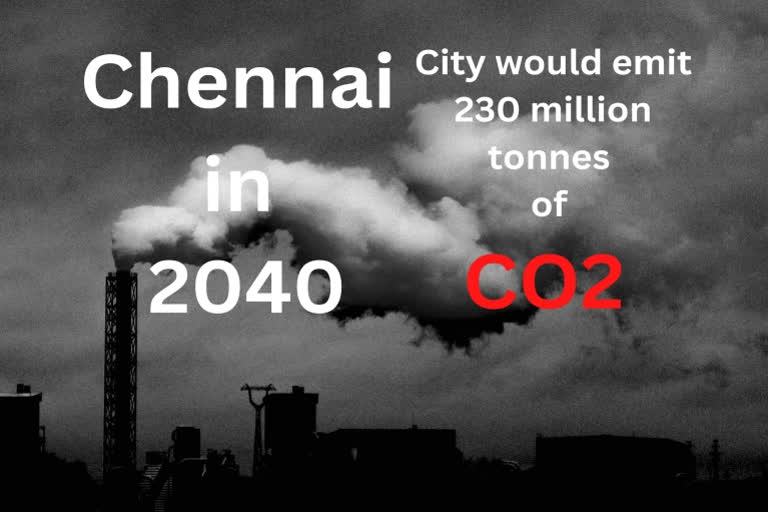Chennai: The Indian Institute of Technology (IIT) Madras researchers predict that Chennai could cumulatively emit 231.9 million tonnes of carbon dioxide (Co2) by 2040 from the construction and operations of buildings alone owing to rapid urbanisation. The researchers suggest that switching to renewable sources of energy for operational requirements of buildings would be a key driver in reducing emissions from Chennai.
The study was conducted by a team of researchers from the Centre for Technologies for Low Carbon and Lean Construction, IIT Madras, and the Indo-German Centre for Sustainability (IGCS) IIT Madras, comprising Prof. Ashwin Mahalingam, Department of Civil Engineering, IIT Madras, and Pokhraj Nayak, former student, IIT Madras.
Explaining the significance of this study, Prof. Ashwin Mahalingam, Department of Civil Engineering, IIT Madras, said, “In order to achieve our emissions targets, we need to benchmark what our ‘business as usual’ emissions are likely to be in future and work backwards. This study represents a step in trying to quantitatively address this problem.”
Rapid urbanization is likely to lead to an increase in built stock across the country. In India, the building industry is estimated to account for around a quarter of total CO2 emissions. This is mainly due to the emissions that arise out of the production of raw materials (such as cement and steel), their transportation to construction sites, energy used during construction and most importantly, the energy used during operation of buildings.
Also read: IIT Madras develops regional climate model to predict localised, accurate rainfall
IIT Madras researchers have conducted a quantitative study to address the issue of increasing CO2 emissions due to the construction of buildings. The researchers undertook the study in three phases. First, the team leveraged geo-spatial modelling techniques to simulate how Chennai would look in 2040. Second, the researchers used Life Cycle Analysis (LCA) techniques to understand the extent of carbon emissions that Chennai would accrue due to urbanisation.
And third, the team developed several scenarios where alternative building materials and energy sources are used in Chennai’s development to evaluate technologies that could lead to the largest reduction in emissions.
For the first phase of the study, the researchers used geo-spatial land models developed by The Nature Conservancy - a global environmental non-profit organisation and used simulation techniques to develop a futuristic map of Chennai in 2040 that takes into account past trends as well as future constraints.
The model developed by IIT Madras researchers showed an increase in urban built-up areas accompanied by a decrease in water and wetlands. The graph below shows the change in land classes over a period between 2019 and 2040.
Burgeoning carbon emissions
The research team, using Life Cycle Analysis of construction activities, has estimated the CO2 released during demolition, construction (as a result of transportation of materials and construction activities), and operation of buildings.
The calculations showed that Chennai would cumulatively emit 231 Million Tonnes of CO2 due to energy consumed by buildings during their construction and operations.
How to reduce the CO2 emissions?
The research team suggested three measures to reduce carbon emissions: replace traditional cement with low-carbon cement, reuse demolition waste for future construction, and switch to renewable resources to meet the energy requirements of operating buildings. The researchers found that the single largest contributor to reducing emissions was the change in energy sources.
The use of clean energy sources to supply 50% of a building’s operational energy needs was also likely to result in a corresponding reduction in cumulative CO2 emissions of up to 115 Million tonnes, in the period between 2019 and 2040. Replacing traditional cement with low-carbon cement had a lower impact in reducing emissions.


